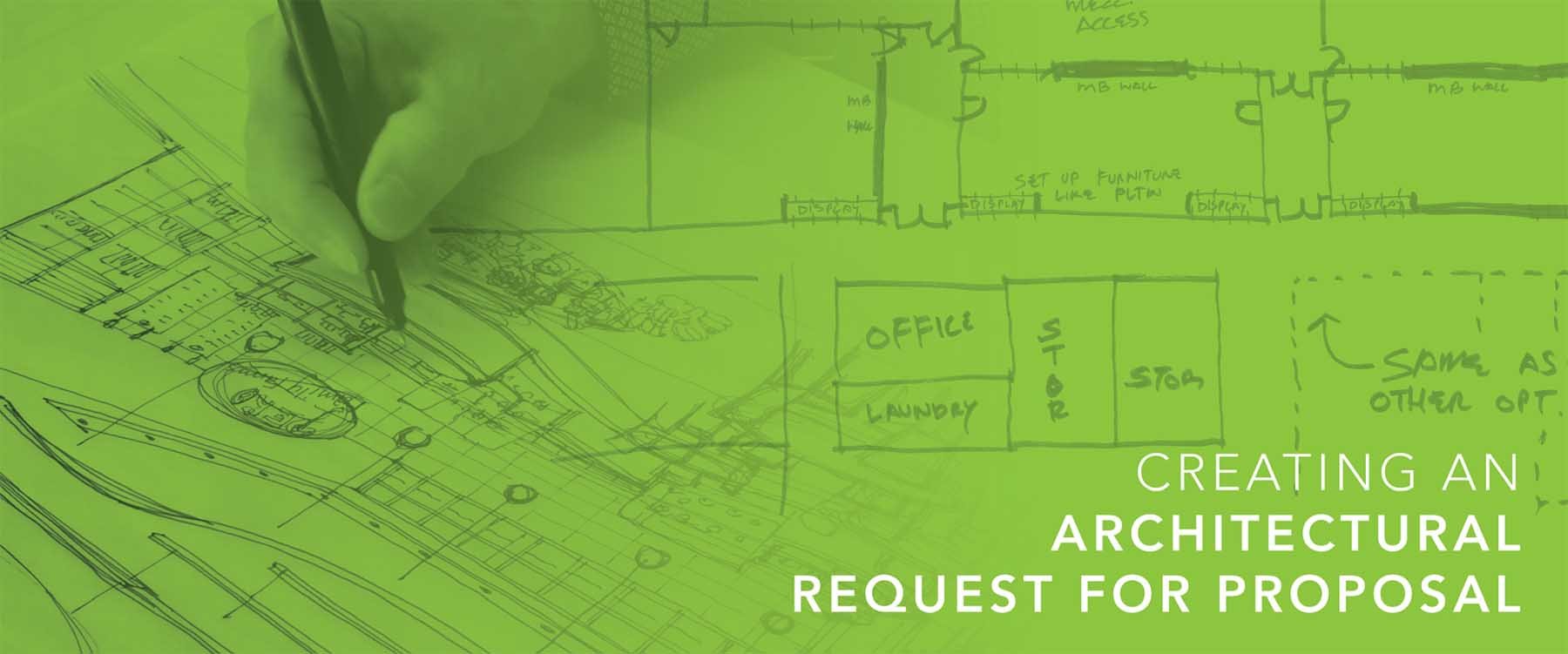Clarity of the RFP Improves Outcomes
An Architectural Request for Proposal (RFP) is frequently a part of the client process that identifies architectural design firms that may help with a building project. An RFP is one part of a selection process that may include other steps such as interviews with experienced firms, fee and negotiation, and even tours of related projects.
Our firm sometimes provides sample RFPs to organizations as they start to develop their own Request For Proposal of Architectural Services. The clarify of the resulting RFP can vary based on the author’s experience with similar projects. The Architectural, Engineering, and Construction industry (AEC), is riddled with unique vocabulary and processes. This makes the creation of a competitive Request for Proposal a lengthy and difficult process for the uninitiated.
This post will attempt to clarify the items that make for a good Architectural Request for Proposal, also known as “Architecture RFP,” “RFP for Architectural Design Services” or even “A/E RFP” (for Architectural and Engineering RFP)
A good Architectural Request for Proposal (RFP) is a document that effectively communicates the requirements and expectations of a project to potential architectural firms. It should provide clear and comprehensive information to enable architects to understand the project and submit competitive proposals. Just as importantly, the clarity of the RFP produces competitive proposals that are easy to compare for selection.
Key Elements of a Clear RFP for Architectural Services
Here are some key elements that contribute to a good Architectural Request for Proposal:
- Scope of Work: Clearly define the scope of the architectural services required, specifying the deliverables, milestones, and any constraints or limitations. For instance, does the project require pre-design services to create a space program? Does the project require unique services such as community presentations, or listening sessions, or fundraising? Does the project require full Architectural Construction Administration services? This allows architects to assess the level of effort and resources needed for the project.
- Selection Criteria: Outline the evaluation criteria used to assess the proposals, such as experience, specific skills, past performance, design approach, and proposed team composition. Be sure to describe how you will measure each criterion. This helps architects understand how they will be compared, alerts them if they cannot compete well (and should not submit), and will allow for an objective comparison of submissions.
- Project Schedule: Include a timeline indicating key project milestones, deadlines for proposal submissions, and the expected project duration. Architects can then determine their availability and assess the feasibility of meeting the project requirements.
- Design Requirements: Clearly articulate the design objectives, functional requirements, and aesthetic considerations for the project. This includes factors such as building type, size, style, sustainability goals, accessibility requirements, and any specific design preferences and measurable goals. Providing as much detail as possible ensures that architects can tailor their proposals to meet the project’s specific needs.
- Site Information: If possible, the Architectural Request for Proposal should include attachments for information about the project site, or multiple sites if a selection of a site is part of the requested services. Include site location, size, topography, existing structures, and any relevant legal or regulatory constraints. Architects need this information to assess the site conditions and understand the design implications.
- Budget and Contractual Information: Clearly state the intended budget for the architectural services, as well as any information about the contract type, payment terms, and the overall project budget. This helps architects determine the financial feasibility of participating in the project.
- Submission Requirements: Clearly outline the format, structure, and content requirements for the proposals. Specify the required documentation, such as company profiles, project portfolios, team resumes, and needs for other consultants such as engineers or special needs such as acoustician, commercial kitchen design, pool design, etc. Clarity in the submission requirements ensures consistency and facilitates the evaluation process, easing the selection process.
- Questions and Clarifications: Include a period where architects can submit questions or request clarifications about the architectural RFP. Provide contact information and establish a deadline for questions to be submitted, and alert when responses will be published. This ensures that all participants have access to the same information and helps avoid misunderstandings.
- Confidentiality and Intellectual Property: Specify any confidentiality requirements and outline how the ownership of intellectual property will be addressed. This protects both the architectural firms and the project stakeholders.
Incorporating these elements into an Architectural RFP helps create a comprehensive document enabling architectural firms to understand the project’s requirements, and to submit well-informed proposals that ease comparison. It even helps architectural firms decide if they should submit at all, which counterintuitively helps provide clarity to the selection process by removing firms not suitable for the project.
RFP = Advertising
Don’t forget, the RFP is an announcement to the design community. It is advertising your project, and an alert to all that you are earnest in your quest to find the right firm. It is essential to be clear, concise, and consistent to attract truly qualified firms.
This post is being published with the hope it may provide guidance to RFP writers, and even provide insight into what an Architect may consider when deciding to submit a proposal in response to an Architectural RFP. Feel free to contact me to discuss your RFP, or to request samples for your use.

PRA Partner Mike Bahr leads the PRA Client Relations Studio, focused on marketing and business development activities.
